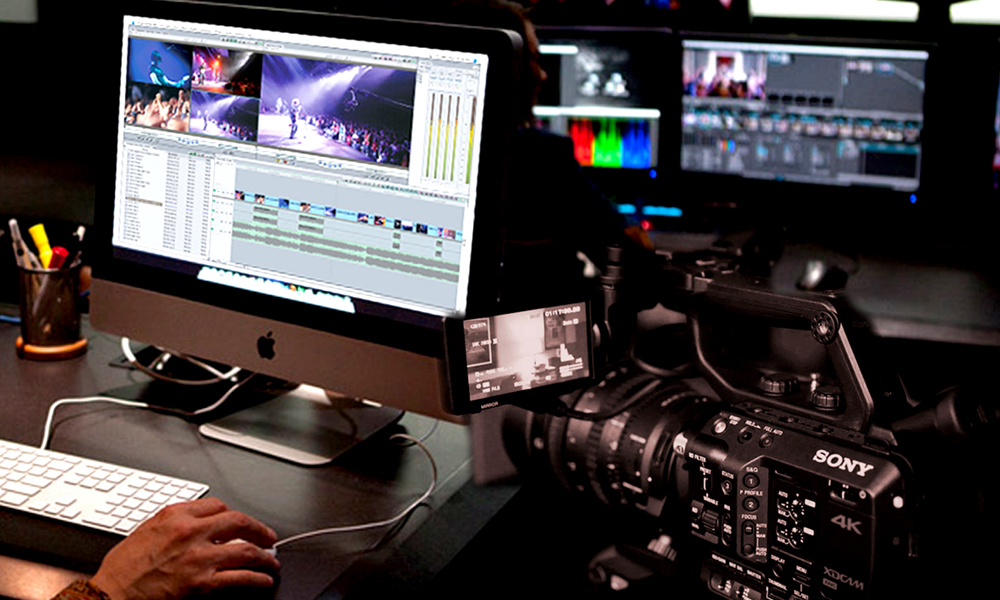
Video Editing
Final Cut Pro is a professional non-linear editing system developed by Apple Inc. that has found popularity amongst independent filmmakers and film editors alike. The program has the ability to edit many digital formats. Final Cut Pro lets you edit virtually anything with the highest possible quality, including camera-native editing of leading SD and HD formats. The faster the tools, the more time you have to be creative.
Final Cut Pro makes it easy to edit quickly, and flexibly. Everything you do in Final Cut Pro — from editing and trimming to audio mixing to finishing to delivery — feels like second nature, so your creativity can flourish.
Application
- Film Industry
- TV Channels
- Production Houses
- Multimedia Companies
COURSE CONTENT
Introduction:
- Understanding Clips, Media Files and Sequence.
- Making a Project.
- Importing Files and Folders
The Browser Window Elements:
- Browser Overview
- Organizing Clips In The Browser
- The Creation of Sequences and Bins
- The Icon View and Columns View
The Viewer Window Elements:
- Viewer Overview
- The Tabs in Viewer
- The Transport Controls
- Marking Controls
The Timeline and Canvas Windows:
- The Timeline Overview
- Canvas Windows Overview
- Editing Clips Into The Canvas & Timeline
- Drag and Drop Editing
- Overwriting and Inserting Edits
- The Sequence Timecode
Basic Editing In The Timeline:
- The Settings
- The Timeline Buttons and Controls
- Navigating and Zooming
- Transferring Clips in the Timeline
- Trimming Using the Selection Tool
- Clip Handles & Media Limits
- Closing and Finding Gaps
- Linking and Sync
The Tools Palette in FCP:
- Selection
- Rolling Edit
- Ripple Edit
- Slide Edit
- Left and right side selection
- Razor Blade Tools
- Zoom and Hand
- Crop & Distort
- Pen Tools
Audio:
- The Adjustment of Audio Levels
- How to Read Audio Meters
- Working with Stereo and Mono Clips
- The Adjusting Plan
- Adjusting Audio Over Time
- The Audio Mixer
- Using the Voice Over Tool in Final Cut Pro
Advanced Editing:
- Using the Keyboard to Edit
- 3 Point Editing
- The Creation of L-Cuts
- Delete Between the In/out Points
- The Trim Edit Window Explained
- Edit in the Trim Edit Window
- Match frame
- The Viewer Sync Controls
- Superimpose Edit
- Fit to Fill Edit
- Replace Edit
- Edit a Sequence of Clips in the Viewer
Subclips and Markers:
- Adding Markers
- Markers in the Timeline
- Creating Subclips
- Using Markers to create Subclips
Preferences & System Settings:
- Matching Settings Overview
- The Item and User Preferences
- Some System Settings
- Both Audio and Video Settings
Capturing Footage:
- Connecting Sources for Capture
- Creating a New Project for Capturing
- Previewing and Marking Your Source,
- Logging Clips, Choosing Clip Settings
- Choosing Capture Settings
- Choosing Capturing Options,
- Setting Capture Preferences and Acquiring Other Media
High Definition:
- High Definition Formats
- Frame Sizes
- Frame Rates
- Scanning Methods
- Interpreting the Numbers
- HD Workflow
- Using HDV
Transitions:
- Applying and Adjusting Transitions
- Favourite and Default Transition
- Trouble-Shooting Transitions
Filters:
- Applying and Viewing Filters
- Viewing and Modifying Filter Parameters
- Applying Audio Filters
- Using a Colour Correction Filter
- Animating Filters.
Multi Cam Editing:
- Creating a Multiclips
- Viewing Multiclips
- Performing a Live Cut
Rendering & Realtime:
- The Real Time Capabilities
- Rendering Overview
- The Rendering Settings
- How to Preview Effects
Colour Correction in Final Cut Pro:
- The Basic Principles
- The Three-Way Colour Correction
- Frame Viewer
Titles and Graphics:
- Generating Items
- Using Title 3D
- Using Motion Enhanced Titles
- Creating Basic Titles
Key framing & Compositing:
- Multiple Tracks in the Timeline
- How to Adjust Basic Motion Attributes
- Using Keyframes
- Adding Keyframes in FCP
- Changing the Place of a Clip
Output:
- Finishing
- Exporting QuickTime and MPEG-4 Files.
- Outputting to Tape
- Backing up Projects
COMPUFIELD offers a unique style of learning
• One Computer : One Student.
• Sessions : Each session will be of 1 hour.
• The timing can be fixed 10.00 a.m. to 7.00 p.m.
• Overseas Students take 2 to 5 hours per day to complete their courses.
• Course duration in days= total session divided by number of sessions per day.
• The Above mentioned Tuition Fees Includes Service Tax.
• No extra charges/ refund for more or less time taken to complete the course.
* 41 sessions of 1 hr. each
